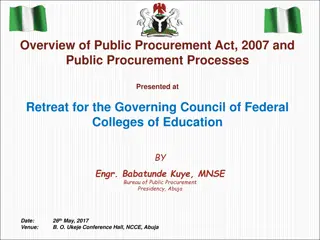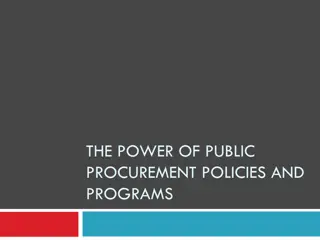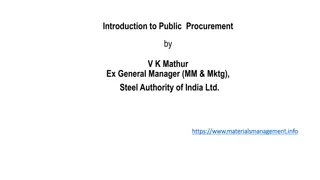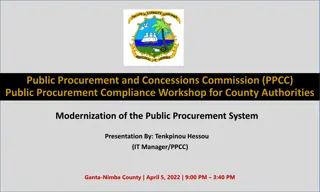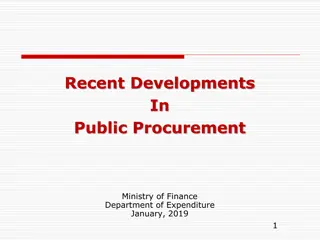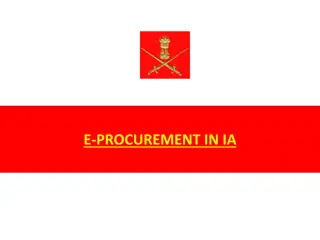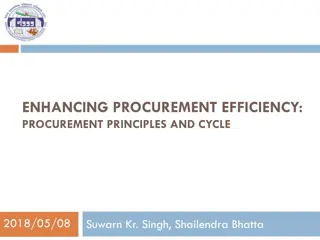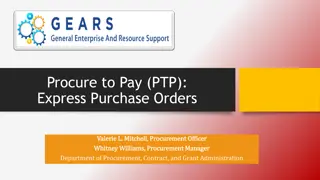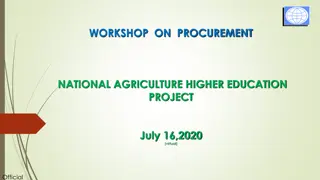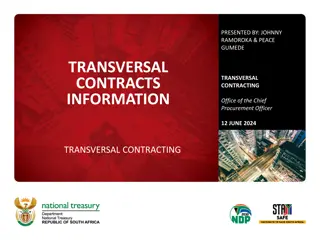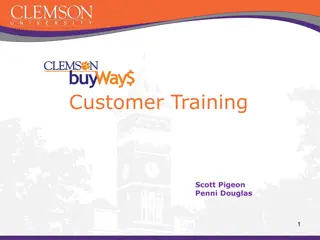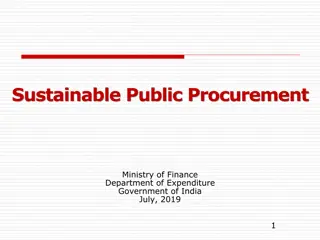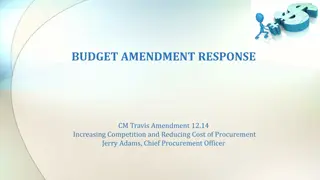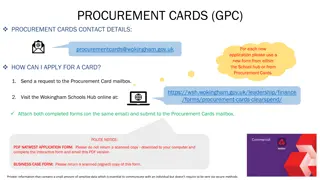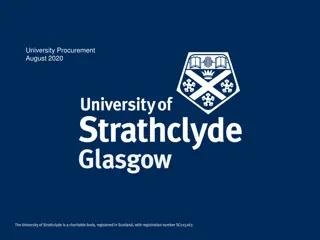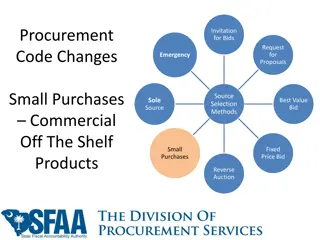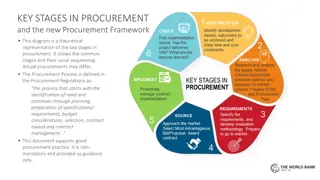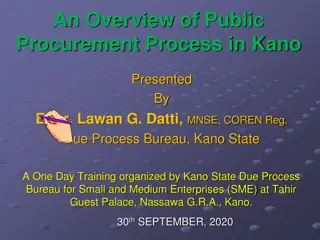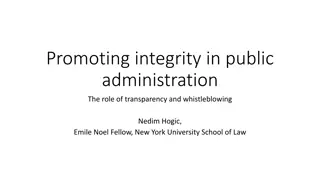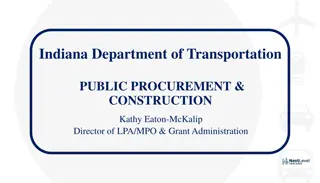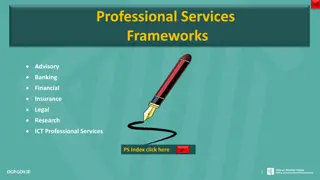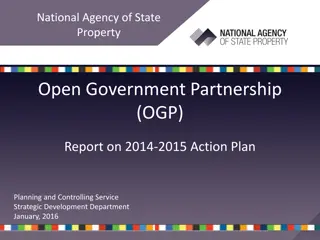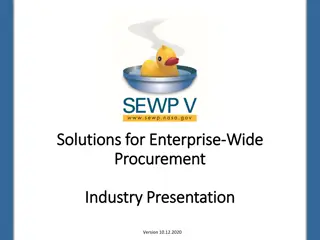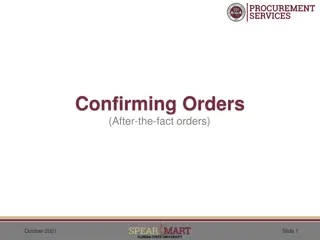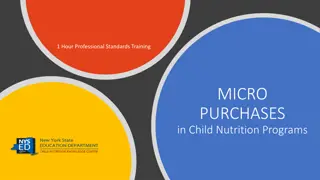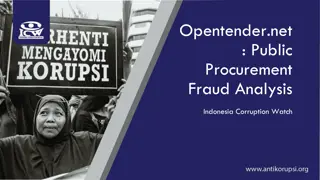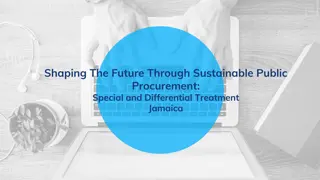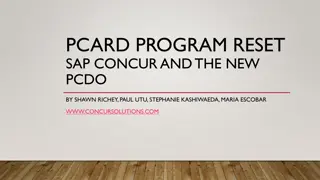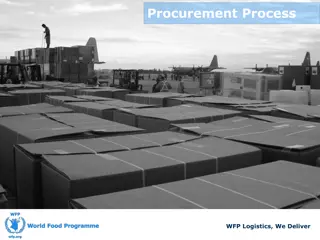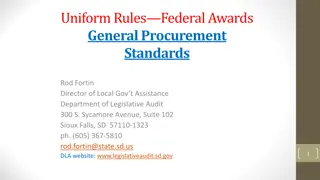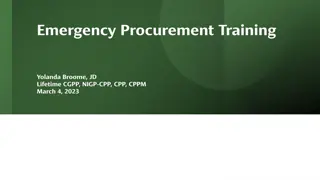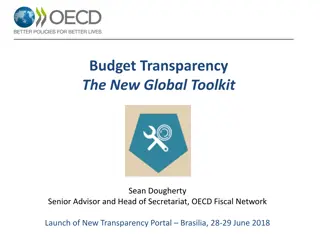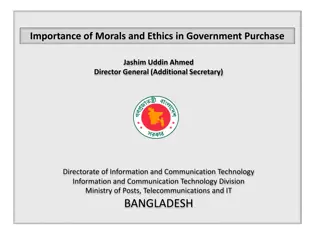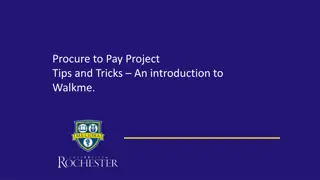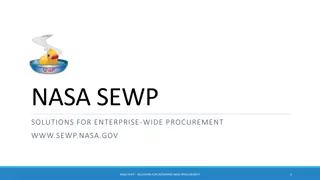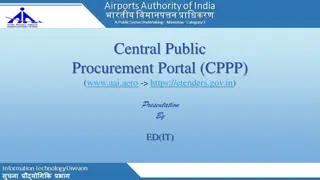Revolutionizing Public Services with E-Procurement: Transparency and Efficiency
Embrace the potential of e-procurement to enhance transparency and efficiency in public service delivery. Discover its definition, benefits, risks, challenges, and opportunities for reducing corruption, improving governance, and driving economic development through streamlined procurement processes.
Download Presentation

Please find below an Image/Link to download the presentation.
The content on the website is provided AS IS for your information and personal use only. It may not be sold, licensed, or shared on other websites without obtaining consent from the author. Download presentation by click this link. If you encounter any issues during the download, it is possible that the publisher has removed the file from their server.
E N D
Presentation Transcript
E-Procurement: Towards Transparency and Efficiency in Public Service Delivery
Presentation Outline Definition Benefits Risks and Challenges Important Considerations
Definition The Use of ICT to publish and distribute public procurement information to support procurement transactions to monitor and manage public procurement to innovate public procurement
e-Procurement Vs. e-Purchasing e-Procurement e-Purchasing Specialized goods, works, services Standard goods, works, services High value Low value Low volume High volume Price & quality Price e-Bidding e-RfP e-RfQ e-Catalogues
Challenges of Current Procurement System Manual processes Long chain of internal authorizations and scrutiny (at times involving several departments) Several visits by Vendors to Departments Generation of reams of paper-based statements and evaluations
Opportunities 1. Reduction in public procurement s vulnerability to corruption 2. Foundation for transparency through provision of Procurement Information Procurement policies Procurement law Procurement regulations Procurement notices Awarded contracts Etc.
Opportunities 3. Potential to reduce administrative costs by eliminating redundant processes and improving the efficiency of public procurement E-Tendering (download of documents, clarification, submission, opening) Online quotations Electronic catalogues
Opportunities 4. Integration Online qualification Contract Management Supply Chain Management Systems integration
Benefits Improved Governance Transparency of public procurement Less opportunity for fraud & corruption Efficiency Gains Competitive prices & reduced transaction costs Procurement management based on data Economic Development Redistribution of savings Private sector activation & infrastructure development
Benefits Better access to government market E-procurement creates greater opportunities for the business community to sell their goods and services to public agencies Public procurement monitoring enhances monitoring and compliance to regulations
Stakeholders Donors Ministry of Finance Others Financiers Manage ment E-Govt Secretar iat Super Users e-GP Project Ministry of TWSC e- Users Government Pilot entities Govt ICT Infrastr ucture Others Marketplace Consult ants Private Sector Supplier s
Key Success Factors Government leadership and management of the Implementation Plan. ZPPA as the Lead agency E Government Secretariat as key stakeholder Ministry of Transport, Works, Supply & Communications Supplier awareness, training and change management e-GP training Change management Awareness creation through workshops.
Key Success Factors Legislative support in place ICT Act. Electronic transaction Act. Public Procurement Act currently under review Achieving early successes Enhanced website www.zppa.org.zm Publishing procurement opportunities, contract awards and Procurement Plans on the ZPPA website
Challenges Lack of awareness and capacity building programs: e-GP is not just ICT. Lack of institutional capacity for public procurement. Resistance to change: Procuring entities and bidders reluctance to convert to e- procurement.
Challenges IT infrastructure and Internet readiness: IT infrastructure for e-commerce not mature in many PE s. IT divide in different regions within the country. Lack of cross-governmental coordination: Multiple platforms may jeopardize long-term goals of e-procurement. Ineffective implementation: Technology can complicate rather than simplify procedures.
Important Considerations Strong government leadership Appropriate implementation framework (e.g. procurement policy, legislation, capacity building, standards) Infrastructure development (connectivity) Complaints mechanism & resolution Oversight over collusion & bid rigging E-Procurement is variedly understood E-Procurement is more about procurement than technology It s not a panacea It s a moving train


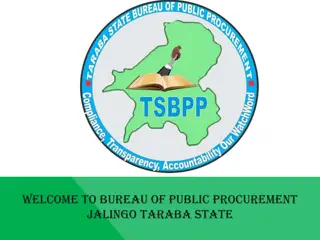
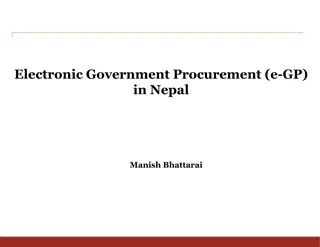
![Comprehensive Overview of Corruption Watch Submission on Public Procurement Bill [B18B-2023]](/thumb/138344/comprehensive-overview-of-corruption-watch-submission-on-public-procurement-bill-b18b-2023.jpg)
